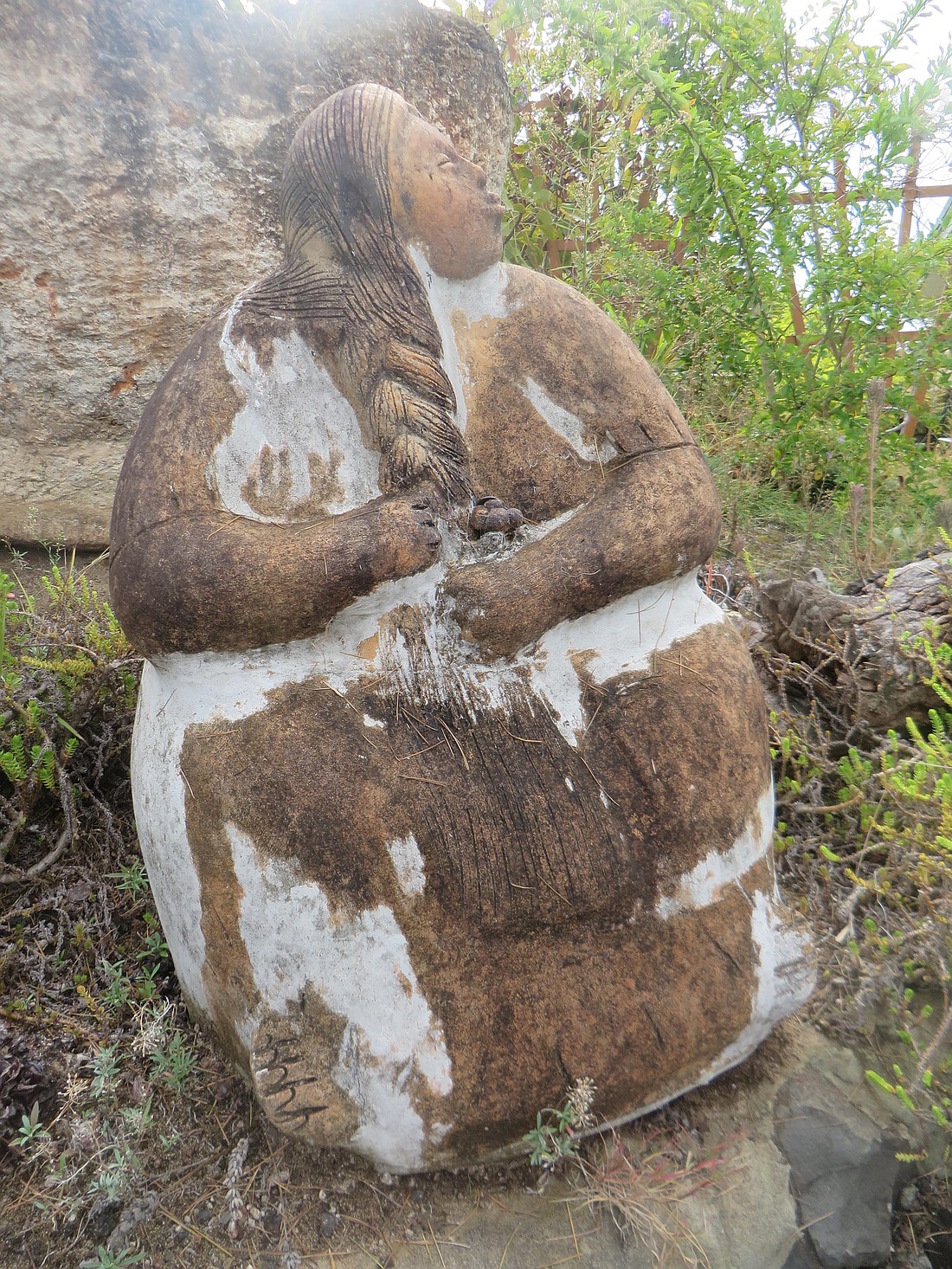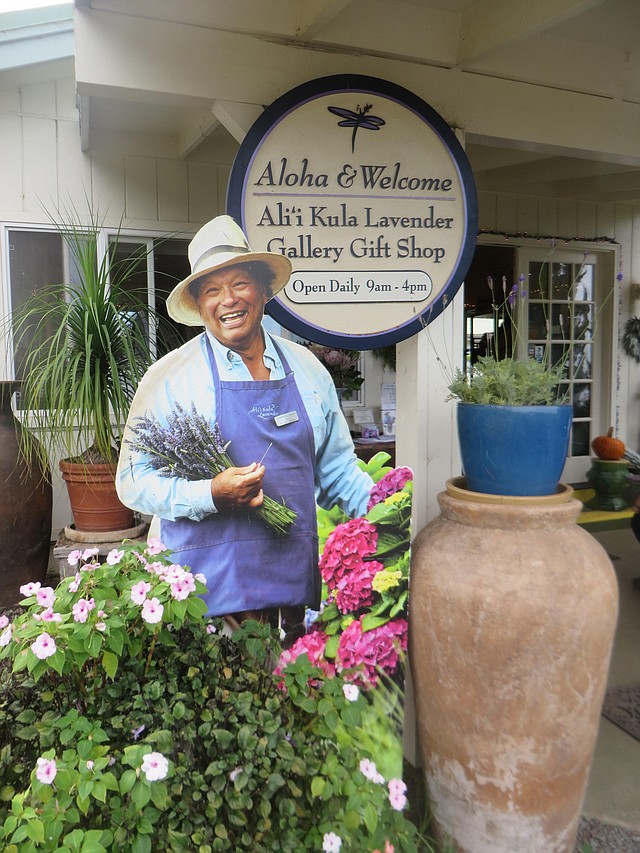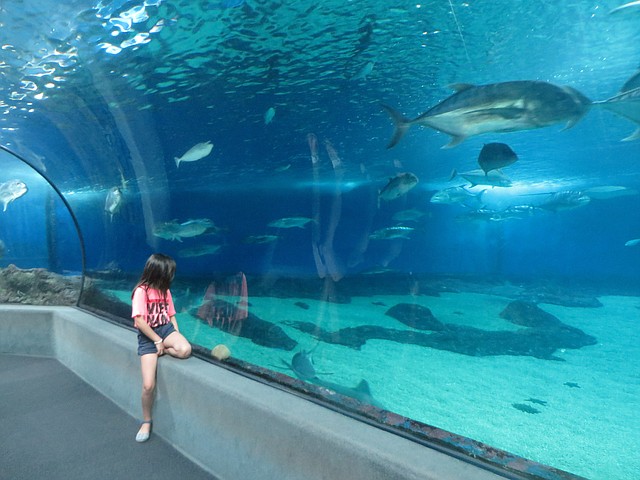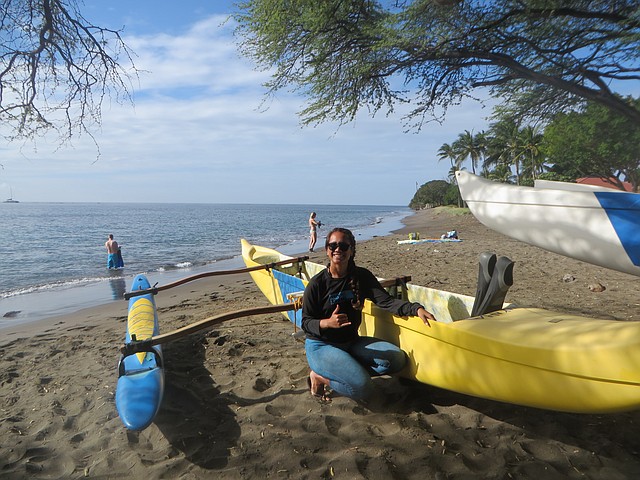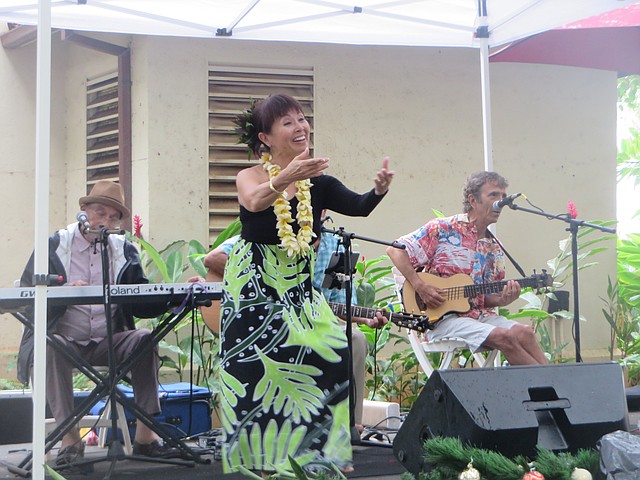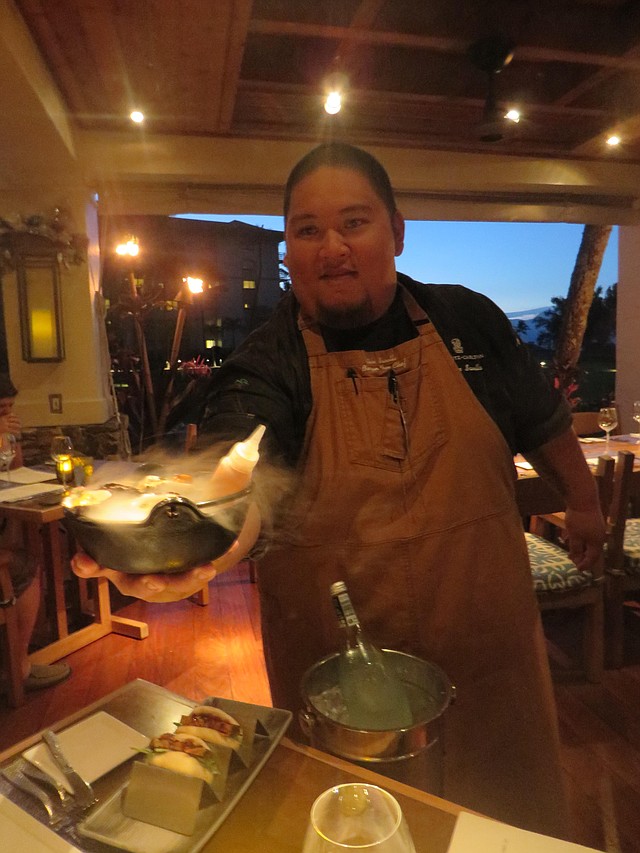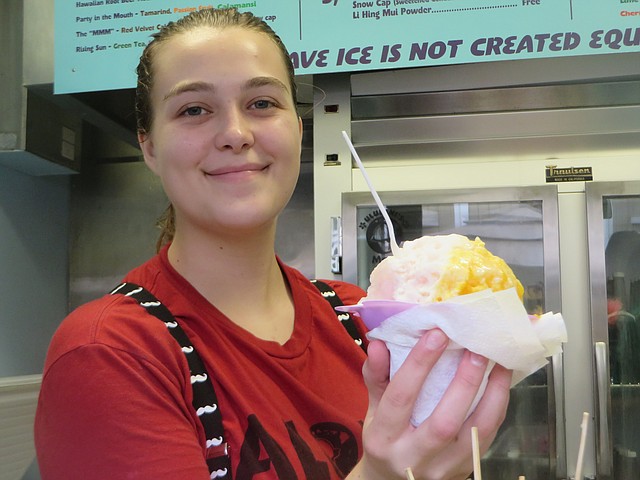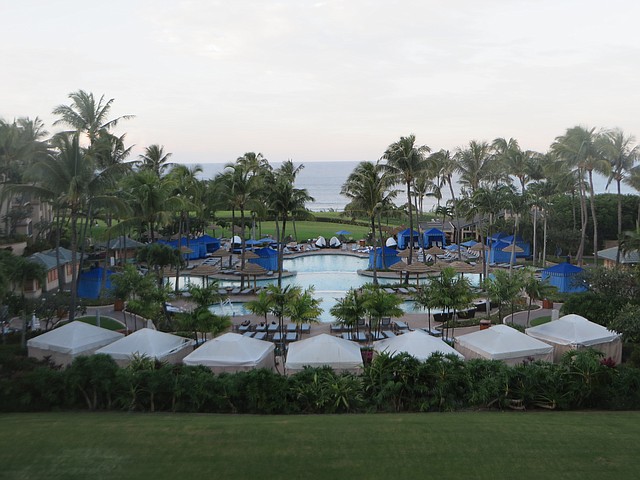Shed your cares...and your parka, and head to Maui this winter
January 23, 2017 at 6:00 a.m.
There’s a reason Maui continuously gets rated as one of the world’s best islands by readers of various travel publications. Actually, there are multiple reasons for this distinction. Many of them hit home for me on a recent visit to this tropical Hawaiian locale.
The weather is a definite enticement. Typically, Maui’s temps remain consistently balmy year-round, with usually no more than a ten degree fluctuation between seasons. The same, monotonous forecast day after day is music to most folks’ ears, especially in the wintertime for those coming from cold climates. Everyone gladly exchanges their parkas and woolens for tees and shorts. And even when it rains, it’s still warm and somehow you can’t be glum because hey, you’re in paradise while your friends back home are scraping ice off their cars.
The beaches are another top draw for the island. With 120 miles of coastline, there are literally dozens of these sun-burnished playgrounds. Take your pick from calm, protected areas that are ideal for swimming to wild stretches with exciting wave action for surfing. The beaches, together with the warm weather, set the stage for a gentle pace of life. I love that everything moves slowly here. It reminds me to take time to stop and smell the plumeria. This can be a bit of a challenge for some harried urbanites from the mainland, but after a few days, everyone gets accustomed to island time and the Maui mindset. There’s sheer bliss in knowing that you don’t have to hurry for anything or anybody and that your cares have been reduced to simple matters, like making sure you’ve applied enough sunscreen or what flavor of shaved ice you’re going to sample next. But, when you’re ready to move from that lounge chair on your lanai, know there are plenty of activities to engage in on land and in the water.
Don hiking shoes and meander the many trails that dot the island. For incredible views, take the Coastal Trail, which runs north from Kapalua Bay Beach, across the sand dunes at Oneloa Bay, through the Ritz-Carlton Resort to D.T. Fleming Beach Park. It’s a beautiful walk (1.7 miles one way) that hugs the ocean’s edge. Half of the trail is paved or on a boardwalk and the other section is on black lava. If you happen to be staying at the Ritz, opt for the Coastal Trail and Tide Pools guided experience with a naturalist from the resort’s Jean-Michel Cousteau’s Ambassadors of the Environment program. You’ll be introduced to the natural wonders of the area and the rich cultural traditions of Hawaii, beginning with a walk around the lush gardens on site. The plants you’ll see, such as guava, lemongrass, papaya, taro and lilikoi (passionfruit), are considered “canoe plants,” having been brought over by boat years ago from other islands in the South Pacific. This came as a surprise to me, as I naturally assumed these fruits were native to Hawaii.
As you stroll along the Coastal Trail, you’ll also learn about the lava from the ancient West Valley Volcano, now extinct, and the seabirds that nest in holes around the area. And then there are the tide pools, which demand closer examination, in order to spot all the creatures that reside within them. The pools teem with life with snails, hermit crabs, mussels and an assortment of colorful coral.
Visiting Haleakala National Park is a must for most first-timers to Maui. It’s the site of the world’s largest dormant volcano. More than 1.3 million people a year go up to the top of the 10,023 foot high mountain to peer down into Haleakala Crater, the size of which would hold Manhattan. Haleakala is Hawaiian for House of the Sun, and the summit has a spiritual significance dating back to ancient Hawaii. To behold this vast lunar-like and visually stunning landscape is one of those “pinch me” moments.
Just going up the mountain is an experience in itself, offering breathtaking panoramas of the isthmus of Maui, the West Maui Mountains and the Pacific Ocean. Many folks make the drive up to the summit in predawn darkness to watch the sunrise over Haleakala, provided the weather cooperates. Unfortunately, Mother Nature is in control and sometimes you’ll get to the top and it will be socked in with fog, as it was on my last trip. The scene was eerie and mysterious as we experienced whiteout conditions and could only make out hazy shapes from our birds-eye perch.
While you’re upcountry, revel in the rolling pastoral hills and take time to explore the “other side” of Maui. There’s plenty to do, with attractions that include orchid and lavender farms, ranches, wineries, shops, galleries and artist studios. On the slopes of Haleakala sits Ali’i Kula Lavender, which boasts over 55,000 lavender plants. You can take a guided walking tour of the place or simply meander along the paths on your own, then check out the shop with its lavender-inspired and local products. Don’t leave without trying the lavender tea and scones!
Another enjoyable outing is a visit to the famed Surfing Goat Dairy, located on the lower slopes of Haleakala. It’s one of the top ag tourism attractions on the island. The dairy produces over thirty different cheeses that have won numerous national awards. There are several types of interactive tours, some of which include feeding and milking the goats, as well as cheese tasting. The store offers such tasty treats as cheesecake and goat cheese truffles in twenty-nine flavors.
If shopping’s your thing, head to Makawao, a town that’s become known for its art scene. It’s a hive of artistic, creative individuals with a strong ranching heritage. Hitching posts line the wood-shingled storefronts and roosters and chickens roam freely around the area. You’ll discover artists working in many media with styles that range from traditional to contemporary. If you’ve got an affinity for sweets, stop in at Komoda Bakery, a longstanding fixture in the community that was established back in the plantation days. Stick donuts, long johns, bread, cakes, pies, cream puffs and more are sold in this humble-looking store that has a loyal following among locals and visitors alike. Volcano Spice Company is also a popular spot, where you’ll find an array of original gourmet seasonings and spice blends to take back home with you as a souvenir you can actually use!
Maui has a number of museums, as well as a top-rated aquarium. For history and heritage, the Bailey House in Wailuku and Baldwin Home in Lahaina will take you back in time machine fashion to life as it was years ago on the island. The aquarium or Maui Ocean Center, is a three-acre facility that’s home to one of the world’s largest collections of live Pacific corals and a diverse variety of native Hawaiian marine creatures, many of which are found nowhere else on the planet. Visitors can explore Hawaii’s underwater habitats, traveling from the shallow reef to the open ocean. The intimate setting features nearly sixty self-paced exhibits that bring you face-to-face with green sea turtles, juvenile sharks, rays and a host of tropical fish. The Open Ocean exhibit, which provides a 240-degree view of over a thousand marine creatures swimming around in a 750,000-gallon saltwater aquarium, is a definite highlight. Certified divers twelve and older can enter the exhibit for an exciting shark dive activity.
I highly recommend the Behind-the-Scenes Tour, for an in depth experience. You’ll hear about coral restoration and rehabilitation (an important collaborative endeavor between the State of Hawaii and the center), Hawaiian green sea turtle husbandry and how various creatures are raised at the center. Guides will take you into the aquarium lab for a glimpse of the sea monkey growth project. The sea monkeys are fed mushroom coral and it’s fascinating to see the different stages of their development. There are also ethereal moon jellies (my personal favorite) on display. Visitors will be interested in learning that sharks, sea turtles and rays are blessed upon arrival and departure from the center. Such creatures are considered personal guardians to Hawaiian families.
If you’re looking for dolphins, seals, porpoises and whales, you won’t find them here. It’s against the law in Maui County to keep marine animals in captivity. The area at the center dedicated to these species is purely educational with life-sized models and interactive displays that serve to increase awareness.
When you’re ready to turn your attention to water-based activities, the options abound. If you want to try a specific sport, such as stand-up paddle boarding, surfing, snorkeling or scuba diving, know there are numerous places that rent equipment and offer lessons. One of the more unique opportunities available on Maui is an outrigger canoe adventure. Outrigger canoeing is the official state team sport and has a long history in Hawaii dating back to 200 A.D. when the first explorers came to the Hawaiian Islands. The canoes were initially built from a single piece of wood and recognized for their unique shape, design and lack of extra ornamentation. They became noted for their ability to battle the often arduous conditions in the open ocean and were viewed as excellent means of transporting goods and people. Today, the boats are made of fiberglass, allowing for a more stable, performance-based craft.
On my Hawaiian Paddle Sports outrigger canoe tour, guide Rowdy Lindsey not only showed my companions and I the basics of paddling, but also shared information about the sport along with some elements of Hawaiian culture. She emphasized the importance of “laulima,” – the necessity for many hands to work together to accomplish a goal – a message our group took to heart in attempting to paddle in unison. As Rowdy yelled out commands like “hut ho,” meaning to change paddling sides, we focused on following orders, as well as our technique. She continually reminded us that she was a tour guide, not a “torture guide!” and kept the experience upbeat and fun. The water was so clear during our excursion that we could see fish in close detail, along with several giant green sea turtles swimming in the area.
Maui is also a cultural mecca. There are different ways you can learn about Polynesian arts and traditions, which embrace a mix of cultures from Hawaii, Tonga, Tahiti, Fiji and Samoa. The luau is popular with many first timers, but for a less commercial experience, check out the Maui Arts & Cultural Center. It’s the main venue on the island for top notch Hawaiian performance and visual artists. There’s also the Masters of Hawaiian Slack Key Guitar Concert Series, held weekly at the Napili Kai Beach Resort. Most hotels have their own cultural programs, too, where you can participate in mini sessions to learn how to make leis, play the ukulele or dance the hula.
To enhance your island experience, make sure you sample some local foods. Try a plate lunch, Hawaii’s version of fast food. It’s an inexpensive, yet filling dish that includes rice, macaroni or potato salad and a choice of barbecued pork, beef, chicken or salmon. Plate lunches can be found at lunch wagons, drive-ins, diners and small markets. Poke in any form is a must, but I like mine in tacos. Basically, it’s marinated raw fish salad, made with ahi or yellowfin tuna or octopus, accompanied by avocado and other enhancements. Fish is omnipresent on most restaurant menus with mahi mahi, ahi, ono, opah, salmon and opakapaka the mainstay. You’ll see it prepared in a variety of ways from pan seared and fire grilled to macadamia nut-crusted and charbroiled.
There are numerous eateries on Maui with choices to satisfy all appetites and budgets. For breakfast, try Nalu’s South Shore Grill and opt for the Acai Bowl or the Island Pancakes served with homemade rum syrup, pineapple, bananas and mac nuts. Star Noodle is great for lunch with its selection of fresh, house made noodles and Asian specialties. Leoda’s is also a good option for unique salads and sandwiches. Save room for the killer pies! My favorites for dinner include Monkeypod, Hula Grill and the Banyan Tree. At Monkeypod, you’ll find locally sourced and seasonal dishes featuring fresh island fish and hand-tossed, wood fired pizzas with interesting toppings like roasted butternut squash, lobster and mac nut pesto. Hula Grill in Kaanapali focuses on a special farmer and his/her products each evening, with different veggies prepared in a myriad of ways from wok-charred and bamboo steamed to wood grilled and chilled crisp.
You’re guaranteed memorable meals at both the Banyan Tree at the Ritz-Carlton and Cane & Canoe at Montage Kapalua. Chef Alvin Savella at the Banyan Tree is a magician in the kitchen, as well as tableside. He’ll wow you with his molecular gastronomy and innovative dishes and his bartender will concoct fabulous “garden to glass” libations. Over at Cane & Canoe, creative, modern Hawaiian cuisine from the land (mauka) and the sea (makai) are the specialties. You’ll dine with Kapalua Bay as your backdrop amid decor reminiscent of a traditional Hawaiian canoe house, complete with a full-size canoe in the center of the restaurant.
And then there’s shaved ice, a true Hawaiian specialty that’s way too easy to develop an addiction to, as it’s just so yummy. Ululani’s and Local Boys in Lahaina get two thumbs up in my opinion. Each shop has oodles of flavors with tropical delights like guava, lilikoi, mango and pineapple. Order the works with haupia or coconut ice cream on the bottom and your choice of cream, azuki beans or mocha on the top. The ice is so finely shaved, it melts in your mouth.
When you’re ready for the ultimate in relaxation, treat yourself to a well-deserved spa treatment, preferably a lomilomi massage. Unwind with this therapeutic treatment that is powerful yet gentle, using light to moderate pressure and continuous, flowing strokes. The elongated movements are said to aid in the removal of negative energy from the body while helping to unblock the buildup of tension. This technique is based on the Hawaiian concepts of working with the body, mind and spirit. My practitioner, Teresa, at the Ritz-Carlton Resort had magic hands and I left the spa in a state of blissful relaxation.
When it comes to accommodations on Maui, you have your pick of everything from small inns and boutique hotels to condos and full-scale resorts with all the bells and whistles. During my time on the island, I rotated between the Ritz-Carlton in Kapalua and the Maui Coast Hotel in Kihei. Each place has its own unique character. The Ritz is a large, upscale property with private beach access, restaurants, pools, spa and a slew of activities; whereas, the Maui Coast Hotel is smaller and more laid back with a number of nice amenities. It’s located in close walking distance to the beach, restaurants and bars.
Maui is an all-around, ideal vacation destination that appeals to young and old, families and couples, adventure seekers and sedentary, lounge chair potatoes. It’s no wonder that travelers from around the globe return time and time again to this special place, unable to resist its island lures.
For all things Maui: www.gohawaii.com/maui
Deborah Stone is a travel and lifestyle writer, who explores the globe in search of unique destinations and experiences to share with her readers. She’s an avid adventurer who welcomes new opportunities to increase awareness and enthusiasm for travel and cross-cultural connections. Her stories appear in a number of publications as well as on various travel websites. Additionally, she can be frequently be heard dishing travel with the hosts of the NPR-affiliated and AARP produced talk radio show, “2 Boomer Babes.” Deborah is a longtime Seattle area resident, who currently resides in Santa Fe, New Mexico.
